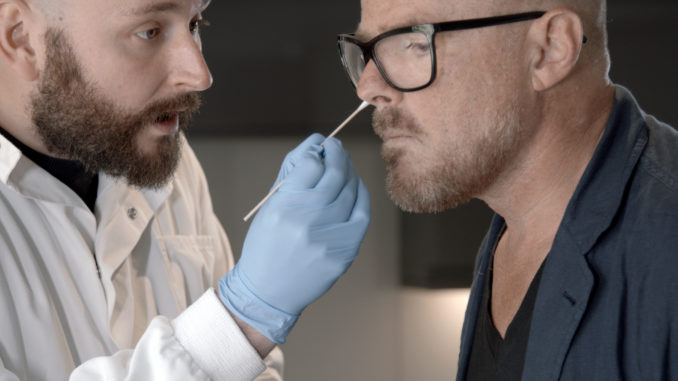
The V&A’s forthcoming exhibition FOOD: Bigger than the Plate will feature five cheeses cultured from human bacteria. Unique ‘microbial portraits’ of musician and cheesemaker Alex James (Blur), chef Heston Blumenthal, British rapper Professor Green, baker and food writer Ruby Tandoh, and Madness frontman Suggs will be on display, recreated as Cheshire cheese, Comté cheese, Mozzarella, Stilton and Cheddar respectively.
The project, titled Selfmade, was conceived in 2013 by smell researcher Sissel Tolaas and biologist and artist Christina Agapakis. It is being remade in 2019 for FOOD: Bigger than the Plate by biodesigner Helene Steiner, chef John Quilter (AKA the Food Busker) and scientist Dr. Thomas Meany – an interdisciplinary team based at Open Cell, an open research centre for biotechnology in West London.
Aiming to challenge cultural squeamishness about bacteria, Selfmade draws on recent scientific studies of the microbiome and its importance in how the human body functions. Contemporary society focuses on cleanliness and hyper-sanitation, however our gut health and experience of the world around us – taste, smell – are dependent on the microbial world.
To create Selfmade for the exhibition, Steiner and her team took bacteria samples from the surface of our donors’ skin – including armpits, noses and belly buttons – using microbiology techniques to grow starter cultures which were then combined with fresh, pasteurized milk to create five unique cheeses. The intensive cheesemaking process was carried out by Foodbusker at Open Cell in Shepherd’s Bush, London, working with a specialist cheesemaker, to produce:
· Cheshire cheese made using Alex James’s bacteria
· Comté cheese made using Heston Blumenthal’s bacteria
· Mozzarella made using Professor Green’s bacteria
· Stilton made using Ruby Tandoh’s bacteria
· Cheddar made using Suggs’ bacteria
Once matured, the five Selfmade cheeses will be exhibited within a refrigerated display.
Selfmade is one of over 70 contemporary projects in FOOD: Bigger than the Plate, which explores how innovative individuals, communities and organisations are radically re-inventing how we grow, distribute and experience food. Taking visitors on a sensory journey through the food cycle, from compost to table, it poses questions about how the collective choices we make can lead to a more sustainable, just and delicious food future in unexpected and playful ways.

Be the first to comment